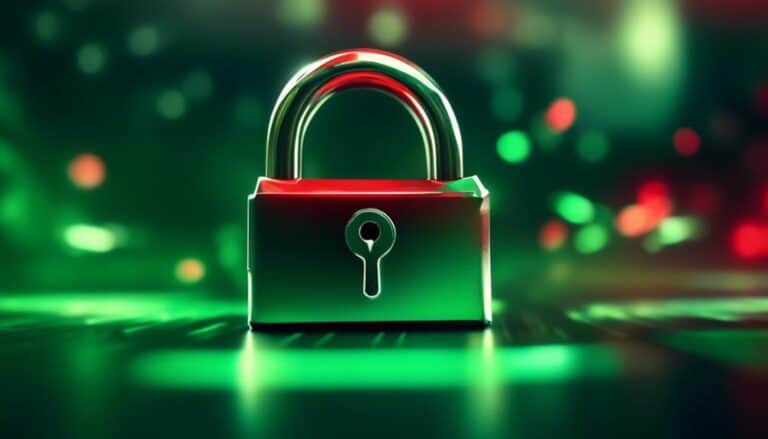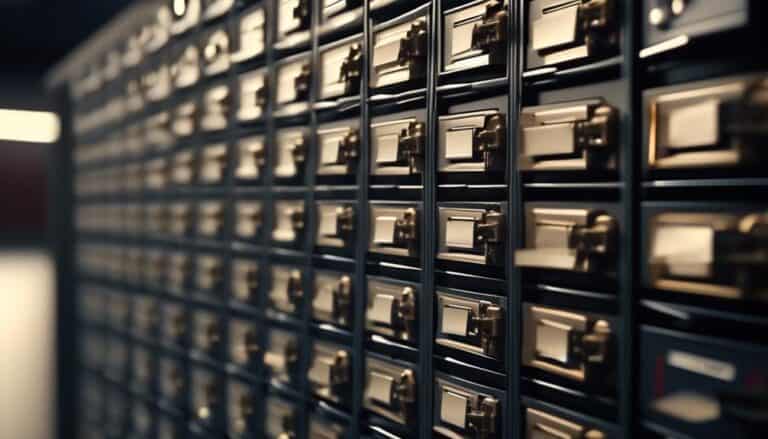Building a Fortified File Management Protocol for Remote Teams
Are you concerned about the security of your team's files when working remotely? With the increasing number of cyber threats and data breaches, it is crucial to establish a fortified file management protocol that ensures the safety of your sensitive information.
In this ever-evolving digital landscape, it is essential to stay one step ahead of potential risks. But how can you effectively protect your files while collaborating with your remote team members? By implementing a comprehensive and robust file management protocol, you can safeguard your data and maintain the confidentiality of your projects.
But that's not all – there are several other important factors to consider.
Key Takeaways
- Implementing strong data encryption protocols, such as SFTP and VPN, is crucial for secure remote file management.
- Establishing a secure file storage system by employing encryption techniques, converting files into unreadable formats, and using strong encryption algorithms like AES and RSA.
- Implementing access controls and permissions, including encryption measures, assigning specific roles and permissions to users, and regularly reviewing and updating permissions.
- Ensuring secure file sharing and collaboration through data encryption, using secure file transfer protocols like SFTP and SSH, regularly updating and patching software and systems, and protecting files during transit to prevent eavesdropping and tampering.
Understanding the Risks of Remote File Management

Understanding the risks of remote file management is crucial for ensuring the security and integrity of your team's digital assets. When it comes to remote file transfer, there are several potential risks that can compromise the confidentiality and availability of your data.
One major concern is the lack of data encryption during file transfer. Without encryption, your files can be intercepted and accessed by unauthorized parties, exposing sensitive information and potentially leading to data breaches.
Data encryption is the process of encoding data in a way that it can only be accessed or decrypted by authorized individuals. It provides an additional layer of security, making it extremely difficult for hackers to decipher the information.
When transferring files remotely, it's important to use secure protocols that support data encryption, such as Secure File Transfer Protocol (SFTP) or Virtual Private Network (VPN). These protocols encrypt the data during transit, ensuring that it remains secure from interception.
Establishing a Secure File Storage System
To ensure the security and integrity of your team's digital assets, it's imperative to establish a robust and secure file storage system. Encryption techniques for file storage play a crucial role in safeguarding your sensitive data from unauthorized access. By encrypting files, you convert them into unreadable formats, ensuring that even if they're intercepted, they remain inaccessible to unauthorized individuals. Utilizing strong encryption algorithms, such as Advanced Encryption Standard (AES) or RSA, can significantly enhance the security of your file storage system.
In addition to encryption, implementing best practices for file backup and recovery is essential. Regularly backing up your files ensures that even if data is lost or corrupted, you can easily restore it to its previous state. It's recommended to create multiple backups and store them in different locations, both locally and on the cloud. This redundancy ensures that your files remain accessible even in the event of hardware failure, natural disasters, or cyberattacks.
Furthermore, having a well-defined file retention policy can help you manage storage space efficiently. By setting clear guidelines on how long files should be kept and when they can be safely deleted, you can prevent unnecessary clutter and reduce the risk of unauthorized access to outdated information.
Implementing Access Controls and Permissions

To enhance the security of your file storage system, it's crucial to implement robust access controls and permissions. By doing so, you can ensure that only authorized individuals have access to sensitive files and information.
Here are some key steps to consider when implementing access controls and permissions:
- Implementing encryption measures: Encrypting your files adds an extra layer of protection by making them unreadable to unauthorized users. Use strong encryption algorithms and ensure that encryption keys are securely managed.
- Managing user roles: Assign specific roles and permissions to each user based on their responsibilities and level of access needed. This helps prevent unauthorized access and ensures that each user has the appropriate level of access to perform their job.
- Implementing two-factor authentication: Require users to provide additional verification, such as a unique code sent to their mobile device, in addition to their username and password. This adds an extra layer of security and makes it more difficult for hackers to gain access.
- Regularly reviewing and updating permissions: As your team and their responsibilities change, it's important to regularly review and update user permissions. Remove access for employees who no longer require it and update permissions for those who've changed roles.
Ensuring Secure File Sharing and Collaboration
By building upon secure access controls and permissions, you can now explore effective methods for ensuring secure file sharing and collaboration in a remote team environment.
One crucial aspect of secure file sharing is data encryption. Encrypting files ensures that they're scrambled and can only be accessed by authorized individuals with the decryption key. This prevents unauthorized access and protects sensitive information from being compromised.
Additionally, secure file transfer protocols should be implemented to protect files during transit. These protocols use encryption algorithms to secure the data while it's being transferred from one location to another. Examples of secure file transfer protocols include Secure File Transfer Protocol (SFTP) and Secure Shell (SSH) File Transfer Protocol (SCP). These protocols provide a secure channel for transferring files and prevent eavesdropping or tampering during transit.
It's also important to regularly update and patch the software and systems used for file sharing and collaboration to ensure any vulnerabilities are addressed promptly.
Regular Auditing and Updates for File Security

Regular auditing and updates are crucial for maintaining the security of files in a remote team environment. By implementing continuous monitoring and staying up to date with encryption standards, you can ensure that your files are protected from unauthorized access.
Here are some key reasons why regular auditing and updates are important for file security:
- Identify vulnerabilities: Regular audits help you identify any weaknesses or vulnerabilities in your file management system. By conducting thorough security assessments, you can identify areas that need improvement and take appropriate measures to address them.
- Detect and prevent security breaches: Through continuous monitoring, you can detect any suspicious activities or attempts to breach file security. By regularly updating your security protocols, you can stay one step ahead of potential threats and prevent security breaches before they occur.
- Ensure compliance: Regular audits and updates help you ensure compliance with industry regulations and data protection laws. By staying updated with encryption standards, you can meet the requirements set forth by regulatory bodies and protect sensitive information.
- Safeguard sensitive information: Regular audits and updates help you safeguard sensitive information and maintain the confidentiality of your files. By implementing strong encryption measures and regularly updating security protocols, you can protect your files from unauthorized access and ensure that only authorized individuals have access to them.
Frequently Asked Questions
To ensure data integrity and prevent unauthorized access to files, you must implement a fortified file management protocol. Focus on preventing data breaches and ensuring secure data transfer for remote teams.
What Are the Best Practices for Securely Storing Sensitive Files in a Remote File Management System?
To securely store sensitive files in a remote file management system, follow these best practices: encrypt files, use strong passwords, limit access privileges, regularly update software, and implement multi-factor authentication. These tips ensure data integrity and prevent unauthorized access.
Are There Any Encryption Methods Recommended for Securing Files During Transmission and While at Rest?
To ensure secure file transmission, use encryption methods like SSL/TLS or AES. These protocols encrypt data during transmission, protecting it from unauthorized access. Implementing these methods will safeguard your files effectively.
How Can Remote Teams Effectively Manage File Version Control and Prevent Accidental or Malicious File Modifications?
To effectively manage file version control and prevent accidental or malicious modifications, implement access controls to restrict editing permissions and use versioning tools to track changes and revert to previous versions if needed.
To prevent data leakage and unauthorized sharing, implement access control measures. Establish user permissions based on job roles, limit file access to necessary individuals, and monitor file activity for any suspicious behavior.
Conclusion
In conclusion, building a fortified file management protocol for remote teams is crucial for mitigating the risks associated with remote file management.
By establishing a secure file storage system, implementing access controls and permissions, ensuring secure file sharing and collaboration, and conducting regular auditing and updates, remote teams can enhance their file security and protect sensitive information.
It's imperative to prioritize file security to safeguard against potential threats and maintain the confidentiality and integrity of remote team operations.








